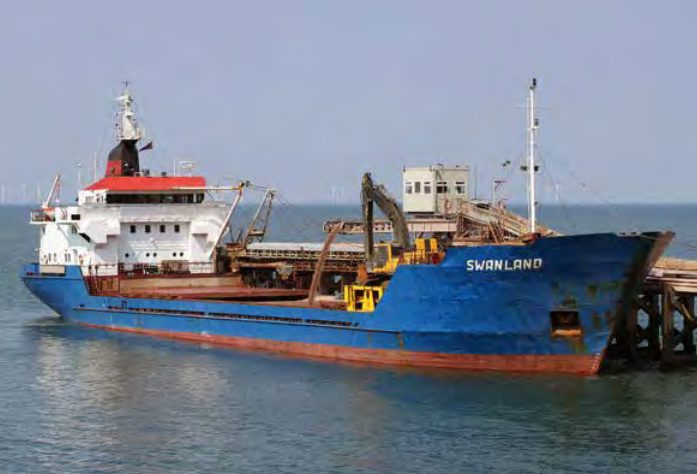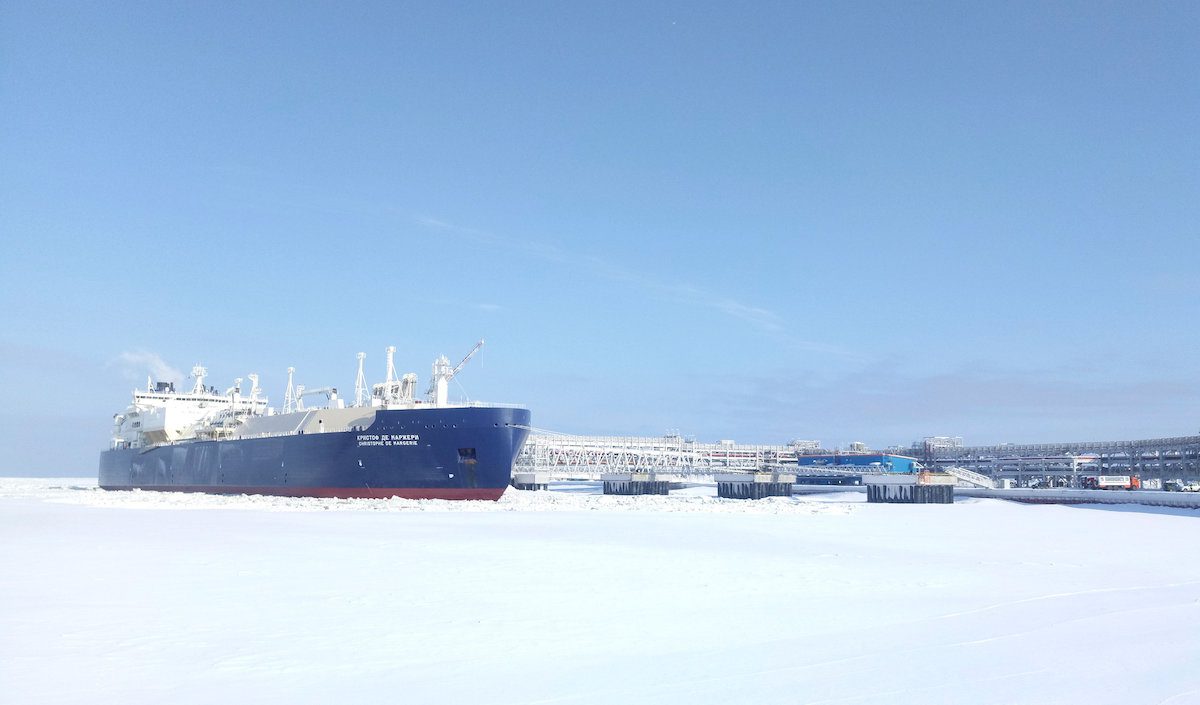M/V Swanland. Image courtesy MAIB
By Bill Redmond
It would not be unreasonable to ask if now is the time for the International Maritime Organisation (IMO) to be administered an effective enema, such has been their egg-bound deliberations on certain maritime safety issues, which continue to exact their lethal, heavy toll. In releasing its findings on the sinking of the general cargo ship, Swanland, in the Irish Sea on November 27, 2011, Britain’s Marine Accident Investigation Branch (MAIB) commented that concerns surrounding safety and high loss rates of similar ships had been repeatedly raised at the IMO. “However, progress to address the problems appears to have been slow,” said the report. It is a tardy record that over 2002-2011 saw 248 general cargo ships foundering worldwide with the tragic loss of over 800 seafarers. Some 226 of those vessels were 15 years old or more, and 139 at least 27 years old. But this is not the only issue where IMO’s apparent tardiness has been disturbing.
Structural failures on ships in heavy weather, for example, affects container ships and a key problem here is deliberate overloading of containers to save freight costs and import duties that probably amount to over £1 billion a year. The solution is a simple one but has been under IMO’s consideration for some years. Making the weighing of containers mandatory at all ports is the simple solution but lack of effective, timely action by the IMO adds daily to the risks, which can only worsen as container ships become ever-more leviathans, with 18,000 TEUs or more on board.
Yet a third disturbing lack of action concerns the need to overhaul SOLAS regulations regarding life craft capacities on cruise ships. The wrecking of the Costa Concordia was a wake up call which seems to have fallen on deaf ears. As this column commented in previous blogs and elsewhere on shipping sites over the last six years there is a serious shortage of lifeboat places on most cruise ships, averaging 25%, when allowance for rapid listing is factored in. It is not unusual for cruise ships to list quickly and so prevent lifeboat launching on the opposite side of the list. Almost as disturbing is the cost-cutting means cruise lines use by making use of much cheaper inflatable life craft that would be almost useless for senior citizens in a raging sea. Had the Costa Concordia foundered many miles from shore in a hostile environment the death toll could have far exceeded the Titanic’s tragic loss.
The problem with general cargo ships is clearly a regulatory one.
As the International Transport Workers Federation (ITF) commented on the Swanland report: “The ITF condemns the lack of effective regulations and control in the international shipping industry that allowed the tragedy to occur. The MAIB report reveals how negligence and cost cutting led to the sinking of the general cargo ship, Swanland,…. with the loss of six Russian seafarers.” ITF, therefore, is calling for:
- A wholesale review of the general cargo ship safety
- Stricter enforcement of all the existing regulations
- Additional checks and safeguards to guard against a potential, precarious safety of older general cargo ships
The Swanland sinking shows, as in many ship losses, that there was a cocktail of reasons that became lethal, almost of of which were man-made and without which even in the roughest of seas the vessel would have survived. At 2 a.m. the 34-year old, Cook Islands-registered general cargo ship, (1,978 grt) experienced a structural failure when heading directly into rough seas and gale force winds (Beaufort scale 8 to 9) when on a passage from Llandulas to Cowes, Isle of Wight, with a 2,730-tonne cargo of limestone. An underwater survey showed that the upper structure of the upturned vessel had failed in the mid ships region on both port and starboard sides.
The investigation found that the major factors contributing to the structural failure were: –
- The limestone was a high density cargo that had been effectively loaded as a single pile within the central section of the hold. As a result, significant stresses were generated in the vessel’s midships section.
- The stresses in the mid ship section were exacerbated by the rough seas in which the wave length was similar to the length of the vessel.
- Swanland’s longitudinal strength had probably weakened significantly over the previous 2.5 years through corrosion and wastage. “The maintenance and repair of the vessel had lacked focus and oversight and no structural repairs had been undertaken since 2009,” said the report.
Other contributing factors included non compliance with the International Maritime Solid Bulk Cargo Code; insufficient loading information; a lack of effective safety management; poor quality of survey and audit; lack of oversight of the classification society by the flag state; and the financial pressure of operating this type of vessel in the current economic downturn.The investigation also identified several safety issues concerning the immersion suits and life jackets on the vessel, and sadly none of these issues is new.
Financial exigencies can also contribute to the lamentable shipping losses and the Swanland was no exception. Such pressures are common within the shipping industry and the scale of the problem is disturbing.
Swanland was only one of thousands of general cargo ships operating on small profit margins that, as they become older, they also become increasingly costly to operate. Its trading pattern was driven by the spot market, plying around the UK , northern Europe and the Baltic, carrying various cargoes like limestone, salt, sand, slag and grain. In 2003 Swanland had been fitted with a self-discharging conveyor and movable carriage to support a tracked excavator on the port side of the main deck. Although the vessel’s mortgage had been paid off it had not made any profit since 2006 and had incurred a £1 million loss since then. The pressure to cut costs, therefore, was high and so the main reason for switching its classification society from Lloyds Register to the International Naval Survey Bureau was to reduce the classification society’s fee by 30%. But as MAIB pointed out, while the savings made on cost of surveys and audit fees would have been immediate it is recognised that many shipowners also enter their vessels with non IACS societies, expecting their audit and surveys conducted will be less robust. In effect, significant, long-term savings are possible through reduced costs of repairs and rectifications of deficiencies. “It is apparent,” goes the report, “that general cargo ships tend towards being entered in class and registered with lower-performing societies and flag states as they near the end of their service life.” This is what the ITF means when it commented: “The fact that at the time of the accident Swanland had been certified as being in accordance with all applicable, statutory requirements makes a mockery of the existing, regulatory framework.”
Recommendations have been made to the International Naval Survey Bureau to improve the quality of the classification survey, audit and training regimes. Recommendations have also been made to Swanland’s managers, Torbulk Ltd, that are aimed at ensuring solid bulk cargoes are safely carried on all its vessels and that crews are familiar with and well drilled in the use of life-saving appliances on its vessels.
MAIB says that there is no justifiable reason why the safety record of general cargo ships should be allowed to lag behind other vessel types, such as bulk carriers without vigorous attempts being made to redress the balance. In summing up its recommendations, MAIB says: “It is hoped that the loss of Swanland and her six crew will be a catalyst for the work already being undertaken by the IMO to tackle the global issue of general cargo safety.” If IMO history is any guide such a hope seems forlorn, and so seafarers around the world will needlessly continue to die, and for that the IMO should ask if its hands are spotless.
Republished with permission from Bill Redmond’s Blog

 Join The Club
Join The Club











